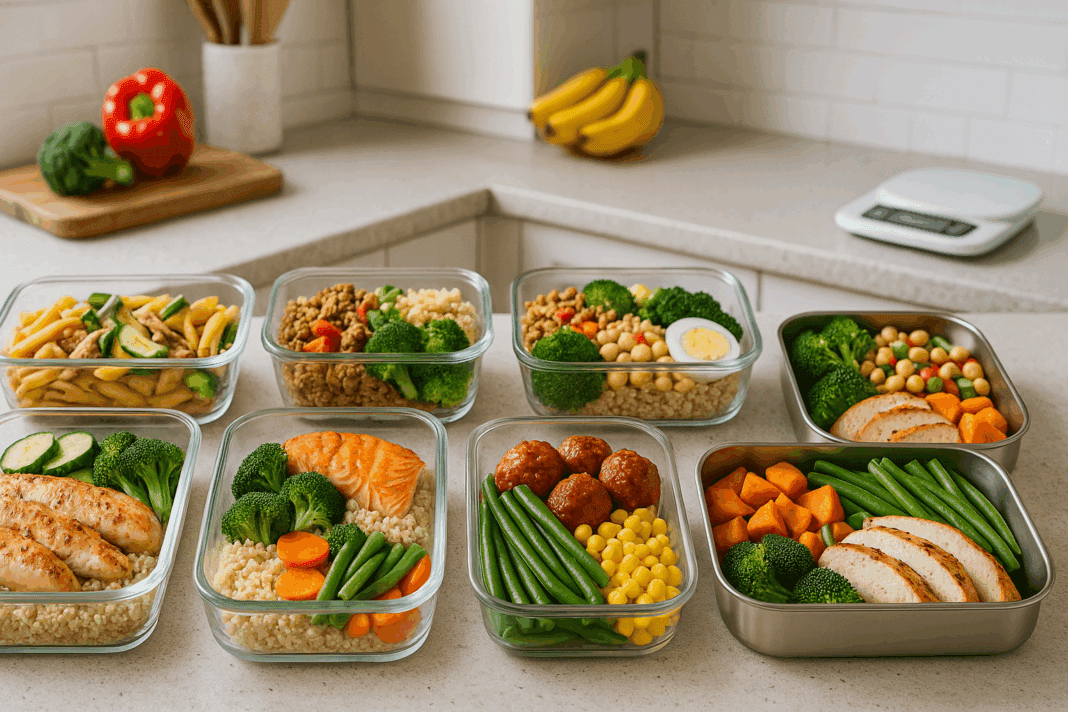In today’s fast-paced world, health-conscious individuals are increasingly seeking ways to gain more control over their nutrition. One of the most effective strategies for doing so is meal prepping—a practice that has evolved beyond a fitness trend into a lifestyle rooted in mindful eating and nutritional empowerment. At the heart of successful meal planning lies a crucial yet often underestimated tool: the meal prep container. Choosing the best meal prep containers isn’t just a matter of convenience or aesthetics; it’s a foundational step toward fostering long-term dietary habits, improving portion control, reducing food waste, and making healthier choices more accessible.
You may also like: Smart Meal Prep for Weight Loss: Expert-Approved Lunch Ideas and Recipes to Stay on Track
Understanding the Role of Meal Prep Containers in Nutritional Planning
The significance of using the right meal prep containers extends far beyond storing leftovers. These vessels facilitate intentional eating by helping you portion meals accurately, separate food groups, and preserve freshness—all of which are essential for achieving health goals. When selecting top meal prep containers, consider how they align with your dietary routine. For instance, individuals following structured eating plans such as the ketogenic diet or a low carb lifestyle will benefit from meal prep storage containers that allow separation of proteins, fats, and fibrous vegetables.
This becomes especially relevant when exploring the nuanced differences between dietary models like the ketogenic diet vs low carb approaches. While both emphasize carbohydrate restriction, keto requires precise macronutrient ratios that can be simplified through organized food prep. Using the best containers for food prep makes it easier to keep meals within your desired macro ranges, ensuring consistency and success.
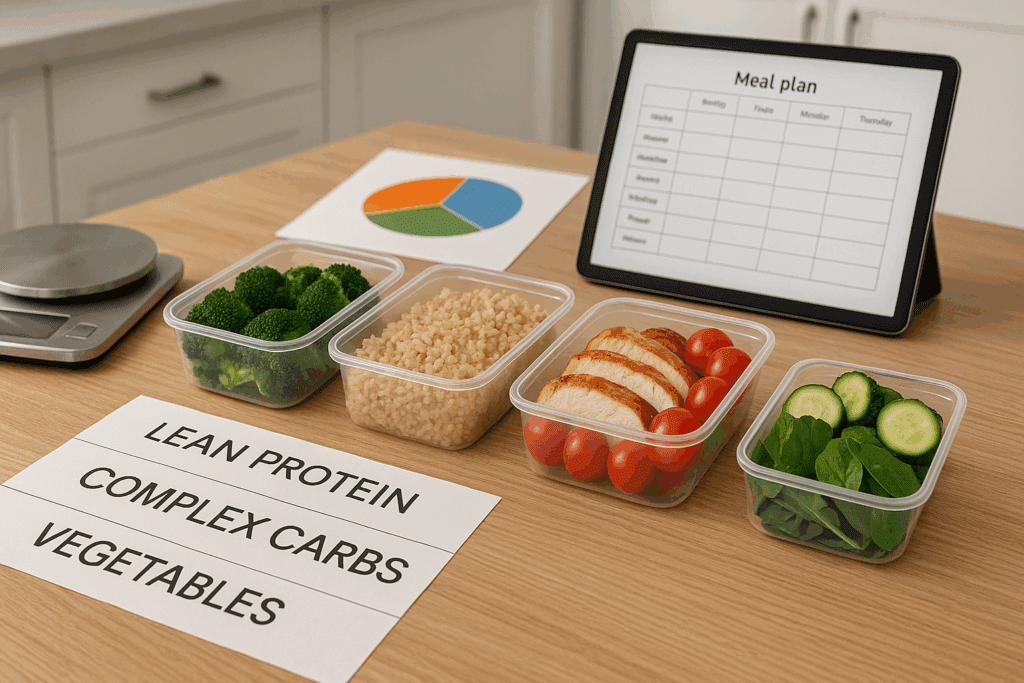
Types of Meal Prep Containers and Their Advantages
From reusable glass options to BPA-free plastic varieties, the spectrum of food prep containers on the market is extensive. Each type serves distinct purposes depending on lifestyle and dietary preferences. Glass meal prep food containers are particularly valued for their durability, non-toxic composition, and heat resistance, making them ideal for individuals who regularly reheat food. In contrast, microwavable meal prep containers made from high-quality plastic offer lightweight portability and often feature compartments for variety and convenience.
For those who prioritize bulk cooking, larger food prep storage containers help store family-sized portions or batch-cooked ingredients, supporting streamlined meal assembly. On the other end of the spectrum, small meal prep containers are ideal for snacks, sauces, or portioning high-fat foods commonly used in keto eating patterns. The key is matching your food storage containers for meal prep with your personal goals and meal structure, whether you’re managing a busy family schedule or experimenting with keto for cognitive clarity and fat adaptation.
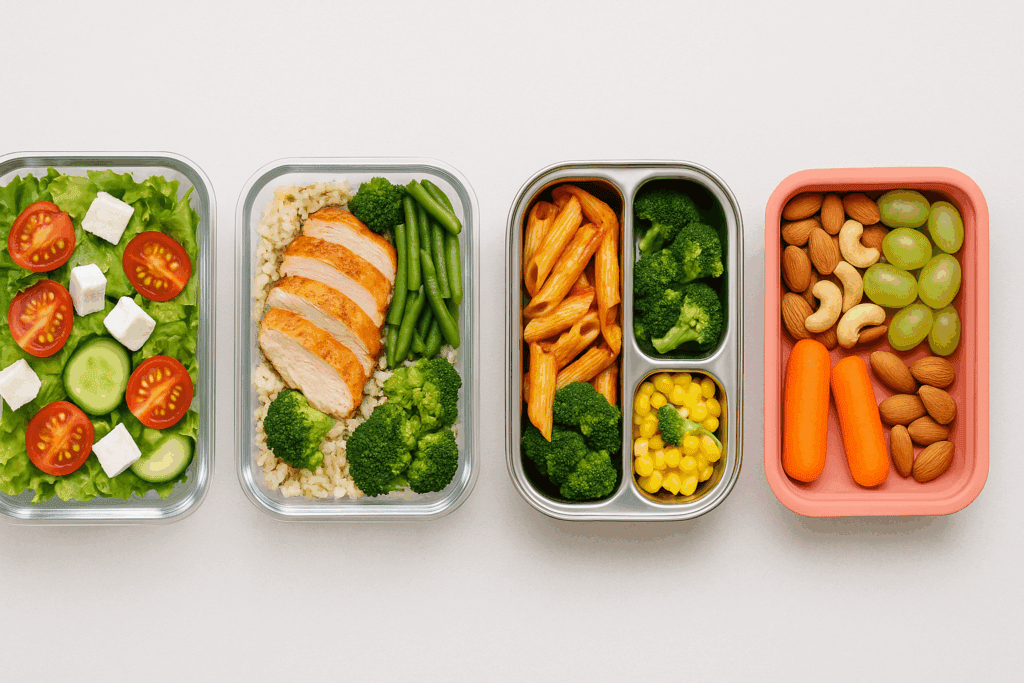
Design Features That Make a Difference
Not all containers are created equal, and their design features can significantly impact functionality. Look for good meal prep containers that include airtight seals to maintain freshness, leak-proof lids to prevent spillage, and modular stacking capabilities to save space. Some of the best tupperware for meal prep also include measurement markers, allowing for more precise portioning—a crucial element when tracking macros on either a low carb or ketogenic diet.
In choosing lunch prep containers for work or school, consider ergonomic features such as snap-on lids, carrying handles, and separate trays to divide components. Meal prep trays with dividers are especially helpful when trying to reduce the glycemic impact of a meal, as they encourage a thoughtful distribution of protein, fat, and complex carbs. These containers become not just vessels for transport, but visual cues that reinforce mindful eating habits.
Materials Matter: Safety and Sustainability
Health-conscious individuals are increasingly aware of the materials that come into contact with their food. Reusable meal prep containers made of glass, stainless steel, or BPA-free plastic promote both personal wellness and environmental stewardship. Glass containers offer the advantage of chemical inertness, which means they won’t leach substances into your food, even after repeated heating. Stainless steel options, while less common, provide durability and temperature regulation, ideal for keeping salads crisp or warm dishes insulated.
Plastic containers, while budget-friendly and lightweight, require more careful scrutiny. Choose high-quality plastic containers for meal prep labeled microwave-safe and BPA-free. These ensure that your healthy meal prep doesn’t become compromised by exposure to harmful chemicals. Moreover, choosing reusable options over disposable ones aligns with the growing commitment to sustainability—a principle that resonates deeply with individuals pursuing not only a healthier lifestyle but a more ethical one.
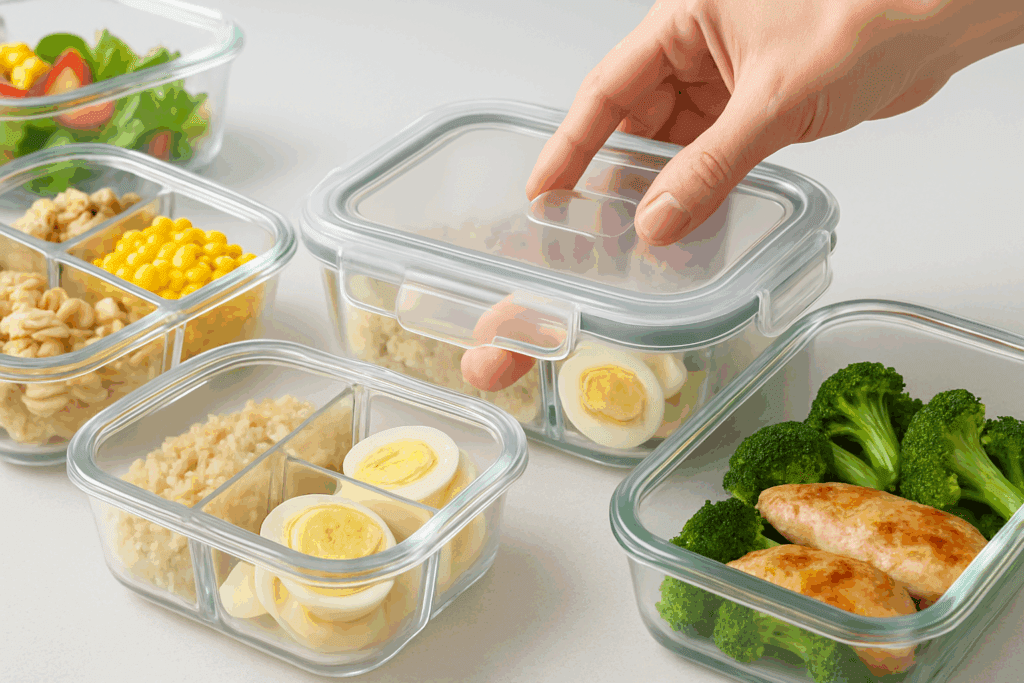
Balancing Convenience with Cost
When evaluating cheap meal prep containers versus premium options, it’s essential to balance short-term affordability with long-term value. While it might be tempting to purchase a bulk pack of inexpensive containers, they often degrade quickly, warp in dishwashers, or fail to maintain a secure seal over time. Investing in top meal prep containers upfront can reduce replacement frequency, preserve food better, and ultimately save money and time.
Meal prep lunch containers that offer multifunctionality—freezer, microwave, and dishwasher-safe features—further enhance value. They support seamless transitions from storage to consumption, minimizing food waste and effort. For those adhering to rigorous diets like keto, where daily meal planning is integral to success, high-quality containers are not a luxury but a necessity. They ensure that your carefully prepared meals stay intact and appealing, even after multiple refrigeration or heating cycles.
Practical Meal Planning with the Right Containers
Integrating meal prep into your weekly routine requires more than culinary enthusiasm; it demands organization and efficiency. That’s where meal planning containers become invaluable. With a proper set of prep meal tupperware, you can batch-cook ingredients, store them in food-safe conditions, and quickly assemble balanced meals throughout the week. This is particularly beneficial when navigating dietary differences such as keto diet vs low carb diet strategies, where pre-cooked staples like grilled meats, cauliflower rice, or roasted vegetables serve as versatile building blocks.
Planning meals in advance using meal prep containers large enough for full entrees—alongside small ones for snacks or sauces—reduces decision fatigue and increases dietary adherence. It simplifies the process of choosing what to eat while supporting nutrient diversity and portion control. For families, having a system of food prep large containers designated for specific meals fosters consistency, reduces grocery costs, and promotes healthier family habits.
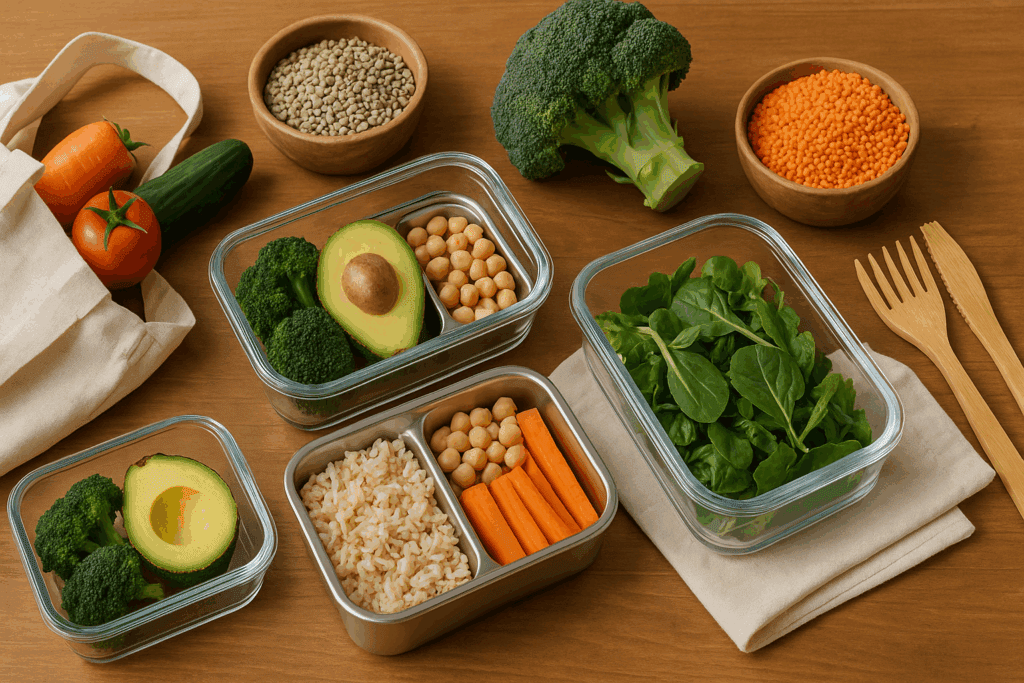
Integrating Meal Prep into Low Carb and Ketogenic Lifestyles
The distinction between a low carb and a ketogenic lifestyle may seem subtle, but it has significant implications for meal planning. The keto diet, which requires a dramatic reduction in carbohydrates and a high intake of fats, benefits greatly from structured food storage systems. Meal prep food containers with compartmentalized sections are perfect for this purpose. They allow for easy separation of macro-dense ingredients and prevent cross-contamination of foods with differing carb loads.
Understanding whether the keto diet vs low carb diet is right for you depends on your goals—be it weight management, mental clarity, or metabolic health. Regardless of choice, consistent adherence is crucial. Is keto a low carb diet? Technically yes, but its stricter thresholds necessitate more precision in prep, which is facilitated by well-labeled and strategically used containers. For individuals asking, “Is keto a good diet?” the answer lies in how sustainable and practical it feels—both of which are enhanced by reliable meal prep strategies.
The question of “is a keto diet sustainable?” hinges on ease and enjoyment. Using high-quality food prep storage containers reduces friction and increases the likelihood of long-term success. It turns meal planning from a chore into a creative and empowering act, reinforcing a positive relationship with food while staying aligned with dietary goals.
Comparing Meal Prep Solutions: What to Look For
With a wide array of options available, how do you identify the best meal prep containers for your unique needs? Begin by assessing your eating schedule and cooking habits. Do you need containers for daily office lunches, or are you prepping dinners for the entire week? If you rely heavily on freezer storage, prioritize containers that resist cracking at low temperatures. If microwave reheating is frequent, choose microwave-safe materials that won’t leach chemicals.
Also, evaluate your portion needs. Some prefer meal plan trays that hold a single meal, while others might need meal plan tupperware in varying sizes to accommodate snacks, side dishes, or shared family meals. Think in terms of modularity: Can the containers stack neatly in your fridge? Do they fit well in lunch bags or backpacks? Practical details such as these make a significant difference in whether your meal prepping efforts become routine or lapse after a few attempts.
Choosing the best meal planning tupperware also involves considering how easily they clean. Dishwasher-safe options save time, while containers with rounded corners are easier to scrub. Visual clarity matters, too. Transparent lids or bodies help you identify contents without opening each one—an underrated but highly useful feature when your fridge is full of similar-looking prep containers.
Real-Life Applications and Success Stories
Stories from everyday people underscore the transformative power of using the right prep container system. For instance, a busy professional juggling work and fitness goals might find that switching to meal prep storage containers with portion dividers results in more balanced eating throughout the week. A parent of three might discover that having designated lunch prep containers for each child helps eliminate morning chaos and reduces reliance on processed convenience foods.
Consider the experience of a couple transitioning to a keto lifestyle. Initially overwhelmed by the dietary changes, they invested in a set of high-quality meal prep containers large enough for dinners and small enough for high-fat snacks. This simple switch streamlined their meal planning process, minimized cooking stress, and significantly improved adherence to their new nutritional goals. Their success wasn’t just about the food but the infrastructure supporting it—a testament to the importance of the right tools.
Making Informed Choices for Long-Term Health
Ultimately, the goal of choosing the best containers for food prep isn’t perfection; it’s sustainability. A well-curated set of meal prep boxes can foster healthier relationships with food by encouraging variety, routine, and mindful consumption. They act as visual organizers and logistical allies in a wellness journey, whether you’re counting carbs, feeding a family, or simply striving to eat more whole foods.
Incorporating food storage containers meal prep into your lifestyle doesn’t require a complete overhaul—just thoughtful adjustments. Start with a few versatile pieces and build your collection based on evolving needs. As you discover what works best for your habits and dietary requirements, your system will naturally refine itself, supporting smarter choices and better health outcomes.

Frequently Asked Questions: Meal Prep Containers for Smarter Eating
What factors determine whether a container qualifies as one of the best meal prep containers?
The best meal prep containers are defined not just by their durability or seal quality, but by their versatility across different lifestyle needs. A top-tier container adapts to varied dietary routines, withstands temperature fluctuations, and minimizes environmental impact through reusable materials. One emerging factor is modularity—the ability to configure containers of different sizes together, which is particularly useful in organizing both lunch prep containers and meal prep trays for multi-meal storage. Additionally, look for meal prep boxes that offer portion-specific markings or customizable compartments, which support intuitive food balance. Brands now often market their best containers for food prep by showcasing how they streamline meal planning while keeping nutrients intact.
How can using reusable meal prep containers improve long-term eating habits?
Reusable meal prep containers subtly reinforce discipline and structure in dietary habits by making intentional eating more accessible. When meals are visually separated and pre-portioned, individuals are less likely to overeat or impulsively snack. This is particularly beneficial when using meal prep food containers designed with divided sections, which promote macro-conscious meal design. Over time, consistently engaging with meal prep storage containers helps establish mindful routines that extend beyond the plate. These containers serve as physical prompts for healthier choices, especially when positioned in visible kitchen spaces or refrigerated at eye level.
Are plastic containers for meal prep still a safe option in 2025?
Plastic containers for meal prep have improved significantly with evolving food safety standards. Many are now manufactured using BPA-free, food-grade plastic that resists warping and chemical leaching, making them safe for microwavable use. However, it is essential to verify that these food prep containers are labeled as microwave- and dishwasher-safe, as improper use can degrade their integrity. Newer plastic meal prep containers also often feature double-seal technologies that preserve freshness for longer periods. For those seeking convenience without compromising health, today’s plastic options strike a balance between safety and practicality.
What innovations are emerging in the design of food prep containers?
One of the most exciting trends in food prep containers is the rise of smart containers integrated with tracking technology. Some now come with QR codes linked to mobile apps that allow users to monitor freshness, caloric intake, and expiration dates—ideal for diet-specific routines or keto tracking. Another innovation is vacuum-sealed meal prep containers large enough for family portions but light enough for daily transport. Transparent silicone lids are also gaining popularity for their secure fit and ease of cleaning, particularly in the best tupperware for meal prep. These features indicate a shift toward containers as active tools in meal planning rather than passive storage solutions.
Is there a psychological advantage to using meal planning containers?
Absolutely. Meal planning containers provide more than just organizational benefits; they contribute to cognitive relief by reducing daily decision fatigue. When meals are pre-selected and stored in dedicated containers, the mental energy otherwise spent on choosing what to eat is conserved. This frees up bandwidth for higher-value tasks and reduces the likelihood of impulsive, less nutritious choices. Furthermore, the visual consistency of food prep storage containers can foster a sense of accomplishment and structure, reinforcing commitment to health goals. In therapeutic or recovery contexts, this kind of visual and habitual stability can be deeply grounding.
How do different lifestyles affect the choice of meal prep containers?
Lifestyle plays a critical role in determining the right food storage containers for meal prep. For a student or office worker, compact lunch prep containers that fit into a backpack or tote are ideal, especially if they are leak-proof and odor-resistant. Fitness enthusiasts may prefer meal prep trays that separate proteins, carbs, and fats for post-gym meals, supporting macro-aligned routines. Families benefit from food prep large containers that streamline batch cooking and reduce time spent preparing multiple dinners. Minimalists may opt for stackable, uniform prep meal tupperware that maximizes kitchen space. Ultimately, good meal prep containers align with how and where you eat most often.
What should you consider when buying cheap meal prep containers?
While affordability is attractive, cheap meal prep containers should be assessed carefully for material safety, durability, and sealing efficiency. It’s crucial to read labels for terms like “BPA-free,” “microwave-safe,” and “freezer-friendly” to ensure quality. Users often find that budget containers may suffice for cold storage but fall short when exposed to heat or extended use. Prioritize containers that offer a basic modular design even at lower price points, so you still gain some level of efficiency. Brands increasingly offer entry-level lines of their top meal prep containers that balance cost with performance.
What makes small meal prep containers valuable in a healthy diet?
Small meal prep containers are often overlooked but play a vital role in portion control and dietary precision. They are perfect for high-calorie items like nuts, dips, or sauces that can skew macros if not measured accurately. When used in conjunction with meal plan food containers, they allow for customizable meals that cater to evolving nutrition goals. These containers also help manage cravings by pre-allocating indulgent treats without compromising the entire meal plan. As part of a broader prep container strategy, small containers offer flexibility and reduce food waste.
Can microwavable meal prep containers influence food quality?
Microwavable meal prep containers not only offer convenience but can also influence the texture and taste of food if not chosen wisely. High-quality microwavable containers distribute heat evenly, which preserves the integrity of delicate ingredients like steamed vegetables or grain blends. Lower-grade options may cause hotspots or degrade under repeated heating, impacting both safety and flavor. Investing in best meal planning tupperware designed specifically for microwave use ensures that reheated meals are not just edible but enjoyable. This becomes especially important in routines involving frequent reheating, such as meal prep lunch containers used daily.
How can you ensure your meal prep storage system remains effective over time?
Maintaining an effective meal prep storage system requires regular reassessment and organization. Periodically evaluate your food prep containers for wear and replace any that show signs of cracking, discoloration, or compromised seals. Rotate usage to ensure even wear and avoid over-reliance on a single set of containers. Labeling your meal prep storage containers with dates or contents using dry-erase markers or removable stickers enhances freshness management. Over time, building a flexible inventory that includes food prep large, small, and specialty containers will allow you to adapt to evolving dietary goals and life demands without disrupting your workflow.
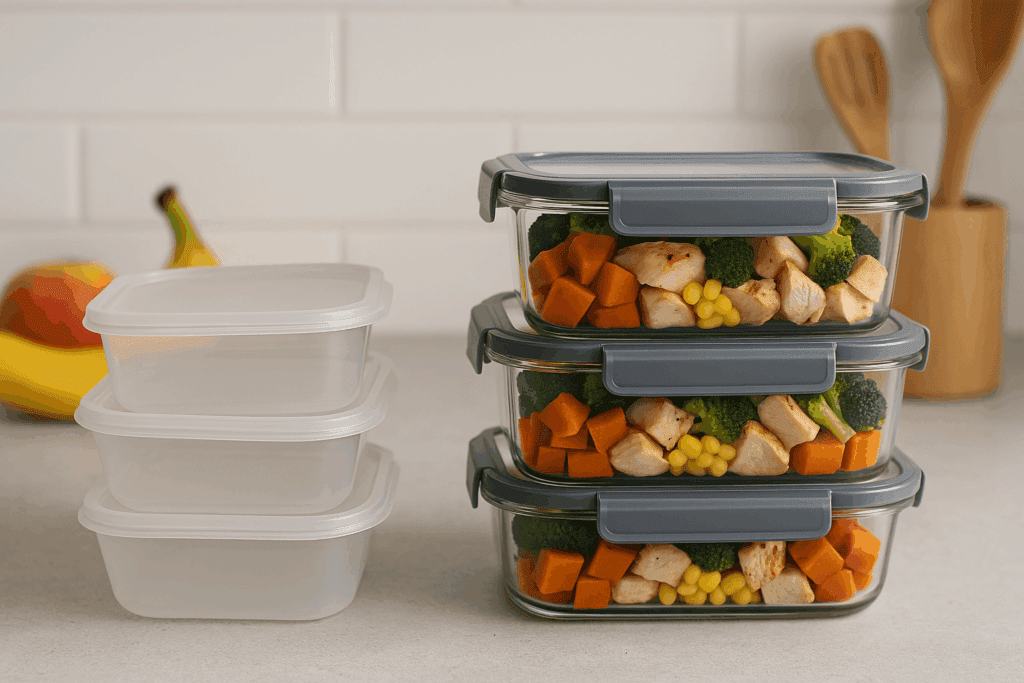
Embracing Smarter Eating with the Right Tools
In a nutritional landscape where convenience often trumps quality, embracing smarter eating means equipping yourself with the tools to succeed. Choosing the right prep container system is an act of self-care and foresight. It enables you to meet your health goals while navigating the demands of modern life with more ease and less stress.
Whether you’re managing a demanding career, exploring the principles of is keto no carbs eating, or simply trying to eat fewer takeout meals, having the right meal plan food containers can make all the difference. They simplify decision-making, reduce waste, and keep your intentions clear and actionable. For anyone wondering, “Is keto a good diet?” or “Is a keto diet sustainable?”, the answer may very well begin with something as simple as a well-sealed, thoughtfully sized meal prep container—ready and waiting in your fridge.
By aligning practical tools with personalized nutritional goals, you pave the way toward a healthier lifestyle that isn’t just aspirational—it’s achievable, enjoyable, and enduring.
Further Reading:
Haier: Your ally for food storage

